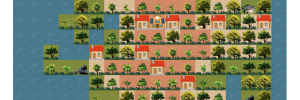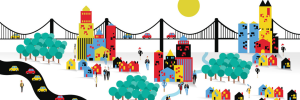In 2014, the Mahatma Gandhi Institute of Education for Peace and Sustainable Development (MGIEP), a New Delhi, India based NGO which is part of UNESCO, launched an international Gaming Challenge, inviting proposals for video games that promote peace, sustainability and global citizenship. The challenge received 104 entries from 36 countries, including 32 inter-country collaborations. In October 2015, the winning game was chosen: World Rescue, a mobile game inspired by the Sustainable Development Goals (SDGs).

Targeted especially at children, the game educates about global challenges and possible ways to address them. In a playful way it also helps understand how to apply sustainable solutions in our day-to-day life, following the “Think globally, act locally” idea. But why is it so important to teach kids about such serious issues like responsibility, peace and sustainable production, consumption and development?
According to the Global Footprint Network the Earth Overshoot Day in 2017 fell on August 2, which was the earliest date since ecological overshoot began in the beginning of the 1970s. Earth Overshoot Day marks the date when humanity’s annual demand on nature exceeds what the earth can regenerate in that year. In other words, we are currently using nature 1.7 times faster than ecosystems can regenerate. But let’s not lose hope – the trend is still reversible. If we move Earth Overshoot Day back 4.5 days every year, we will return to using the resources of one planet in the future, around 2050.
And because today’s children will play a major role in the Earth’s future, it is important to raise their awareness of sustainable solutions that are already available. This is where World Rescue comes into play: While enjoying the video game, kids (and adults as well, of course) simultaneously learn about urgent global challenges and how to tackle them. Therefore, World Rescue is more than a game – it is a starting point for changing our perspective that may prevent us from destroying our planet and guide us towards a more safe and stable world.
We had an unique opportunity to interview Sandhya Nankani, the founder of the New York based company Literary Safari – the research and narrative design team behind the characters and stories in World Rescue. Deeply committed to implement inclusive projects that promote literacy, play, problem-solving, diversity, global connections, and storytelling, Literary Safari develops educational content and children’s apps inspired by the 4 C’s of 21st century education: Creativity, Critical Thinking, Communication, and Collaboration.
Sandhya, what is the main topic of the World Rescue game?
World Rescue is a narrative, research-based video-game inspired by the Sustainable Development Goals of the United Nations. Through fast-paced gameplay set in Kenya, Norway, Brazil, India, and China, players meet five young heroes and help them solve global problems—such as displacement, disease, deforestation, drought, and pollution—at the community level. The goal of the game is to educate young global citizens about sustainability challenges and to show them that they too have a part to play in the creation of a more sustainable world!
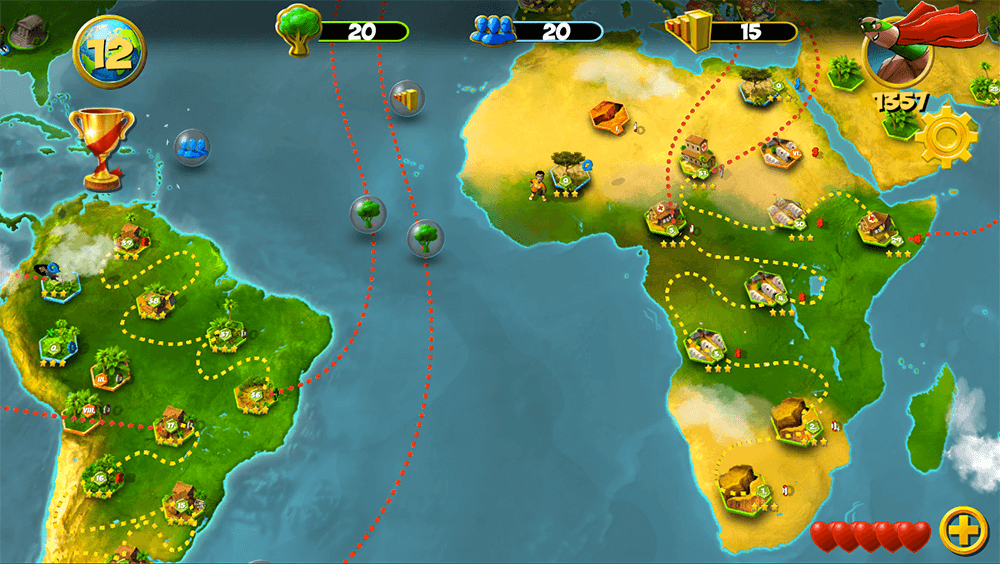
How did you get inspired to create a game about the Sustainable Development Goals of the UN?
My company Literary Safari was approached by MGIEP back in 2016 when they had put out a worldwide gaming challenge to developers around the world to pitch concepts for gaming experiences based on peace, sustainability and global citizenship. The winning idea for World Rescue came from the Hungary-based game company Pixel Perfect/Zu Digital and when our team came aboard, the game mechanics, general concept and framework were in place along with the list of countries or regions that would be represented in the game and a general sense of the storyline of the game. What was missing was the narrative thread, the fully developed characters, and the actual story of the game—which is what Literary Safari’s team helped create and map to the game mechanics.
How did you get inspired to create the characters in the game?
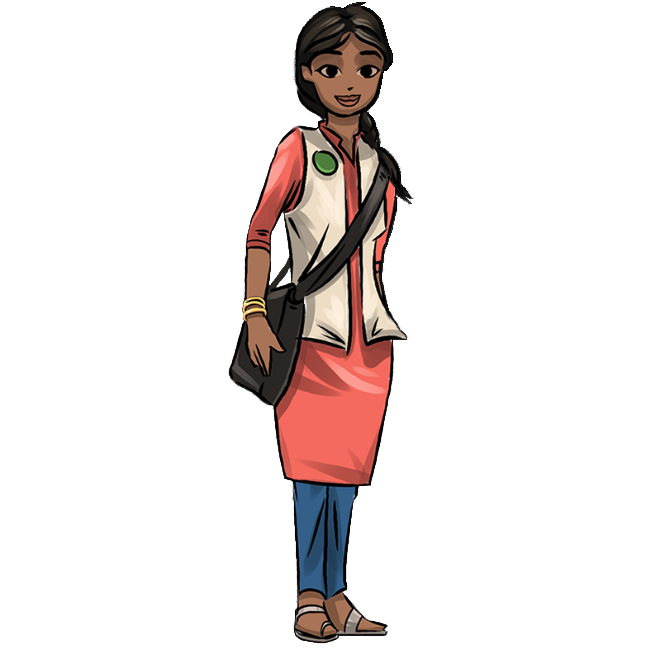
We knew that World Rescue needed five main characters from different parts of the world – India, China, Africa, South America, and Europe – who would be between the ages of 11 and 35, and we knew that there were certain sustainability challenges that would be important to explore. What we needed to figure out was how to root our characters in real-life challenges and how to write a script that would feature solutions that they could realistically develop. We needed characters that were rich, authentic, not riddled with stereotypes but rooted in real-life case studies and development solutions. Being a superhero who can change the world doesn’t always mean having super powers – it means looking at problems creatively, being an attentive researcher and observer, knowing what resources exist that you can tap into locally, how you can collaborate with people and organizations, and finally, being resourceful and courageous. Our characters demonstrate all of these characteristics.
Our team did extensive research into the regions and we emerged with ideas for characters who represented a diversity of passions, and who could cumulatively tell a story about what young people can achieve when they harness their passion to make a difference.
Why did you choose a video game as a medium to talk about global problems?
Over the last several years, UNESCO through MGIEP has invested tremendously in research and product development to explore the impact and value of learning games and their potential impact on supporting empathy building, peace education and conflict resolution. World Rescue was an investment in product development to explore these questions further. At every step of development, the question we asked ourselves was: How can empathy games with their narratives and underlying mechanics, by evoking human emotions, support peace education and teach conflict resolution skills while educating a generation of young people about the United Nations’ goals?
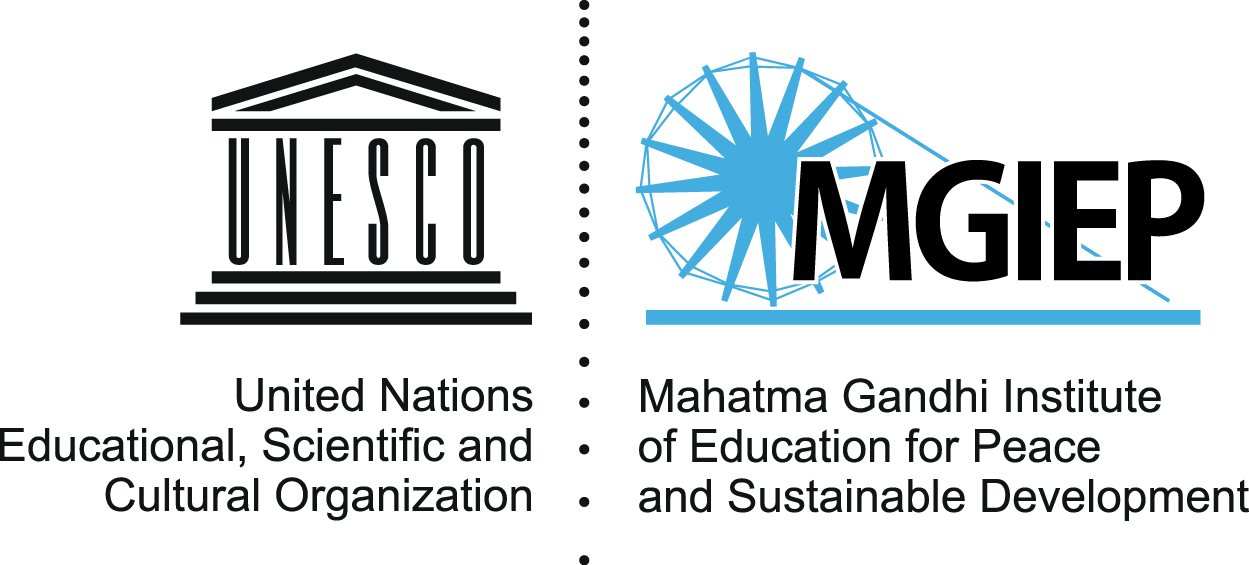
As game designers and producers, I think that we need to mindfully create games that can meet curriculum objectives and support classroom teachers by having clear learning outcomes and that are equitable, diverse, and inclusive. Through a narrative-based storyline and fast-paced game mechanics, we take players through the journey of the five young characters and help raise awareness about the SDGs of the UN. For World Rescue, we had game mechanics and overall SDG goals but then we studied them closely and picked the ones that would be relevant and timely as well as engaging and that we hoped teachers could create curriculum or tie into existing curriculum in various content areas – environment, migration, current events, invention/science, industrialization, etc. In creating World Rescue, we selected countries and regions as well as world issues that come up in social studies curriculum in middle/high school – the environment, industrialization, etc.
Why do you think a video game can be a successful medium to talk to young people about global problems?
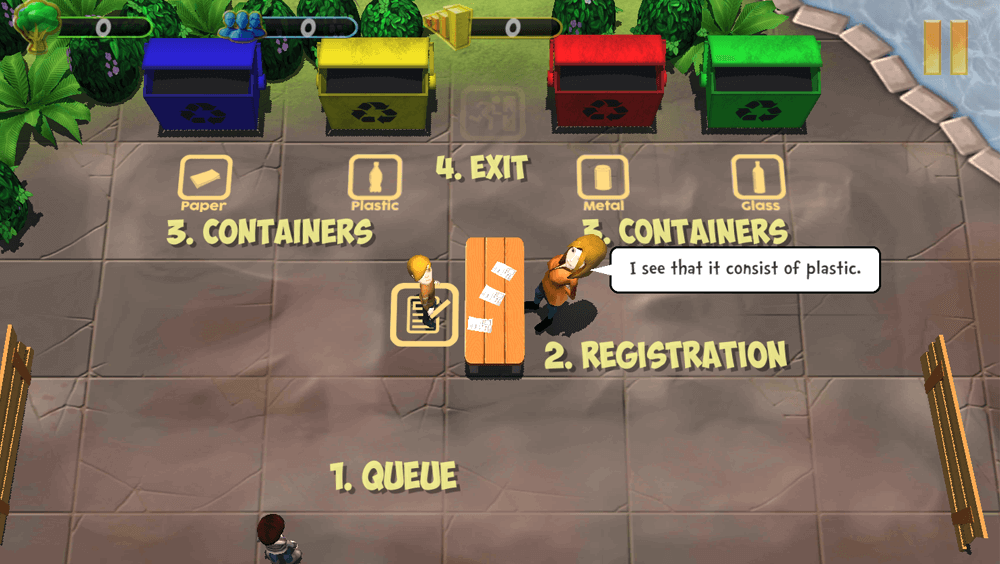
World problems that occupy the agenda of the United Nations can sometimes feel far away and unrelatable to young people. But if they walk in the shoes of the characters in World Rescue, they can experience those problems in as much a first-hand way as possible. Other examples may be mini-games such as Aid, where they stand in line to get supplies such as water, shelter, and food, or Travel, where they become refugees and have to escape a dangerous situation. You know the saying “Walk in someone else’s shoes.” Games allow us to do this – and while entertaining, they can also educate and open one’s eyes to circumstances outside of our possible real-life experience, perhaps even inspiring us to learn more about different cultures, global issues, and communities.
Who is the main target of the game? Is it targeted at specific age groups? If yes, why?
The content of the game hits on topics of drought, climate change, industrialization, and research and development, which are covered in social studies courses in middle school (as we call it here in the US) for young people in grades 5-8, and that, I think, is the ideal audience, especially as building awareness of social and civic responsibility on a local and global level is key during these developmental years. Because game has dialogue which is in English, so its maximum experience would be for English language speakers.
Are there any skills required to play the game? If yes, which?
The skills in the game are all easily acquired. What is special about the game is that you build your knowledge about the content of the game – learning about different countries and topics such as deforestation, drought, water pollution, and energy.
Do you think that, through using the game, sustainability goals can be achieved?
I think sustainability requires a diversity of efforts from many different spheres. The game is one avenue to open young people’s eyes to the importance of sustainability and to engage them in a deeper understanding of this chart so that it has real meaning and relevance to them.

What could happen in players while playing World Rescue, psychologically speaking?
An Online Gaming and Youth Cultural Perceptions survey that was conducted in Ireland by Killian Forde and Catherine Kenny found that children who play multiplayer games online are more likely to have a positive attitude toward people from another country. In this one study, 62 percent of online gamers hold a favorable view of people from different cultures compared to 50 percent of non-gamers. That is just one report, but it certainly guided my thinking as we developed World Rescue.
MGIEP has published a terrific white paper titled “Empathy, Perspective and Complicity: How Digital Games can Support Peace Education and Conflict Resolution” that was authored by Professor Paul Darvasi of York University in Toronto, Canada. It’s worth a read.
I also love this quote from “The Benefits of Playing Video Games” by Isabela Granic, Adam Lobel, and Rutger C. M. E. Engels, American Psychological Association. I I do think applies to World Rescue and other narrative and empathy games:
“Gameplay has cognitive benefit because games have been shown to improve attention, focus, and reaction time. Games have motivational benefit because they encourage an incremental, rather than an entity theory of intelligence. Games have emotional benefit because they induce positive mood states; in addition, there is speculative evidence that games may help kids develop adaptive emotion regulation. Games have social benefit because gamers are able to translate the prosocial skills that they learn from co-playing or multiplayer gameplay to “peer and family relations outside the gaming environment.”
When creating a game, what elements are most important to include?
I will quote Jordan Shapiro, author of the MindShift Guide to Games and Learning, and a prolific author on games and learning here:
“Imagine if we could build learning games that provided the same kinds of complex motor and cognitive demands as fast paced action games while featuring narrative content that was curricularly relevant. Games all feature stories laid atop interactive mechanics. One approach to learning games might be to build narratives that reinforce educational content while employing the same familiar game mechanics. Teachers could also have students imagine how existing commercial game narratives might be retold to be relevant to class content.”
Game-based learning must be mindful of diversity of students audiences, network connection, learning environment, and technology. KIDMAP (Kids Media Diverse and Inclusive Action Project) is a new grassroots coalition of which I am one of the founding members. We are working on creating a best practices tool kit for media producers, including game developers, to help them in this sphere – this goes as far as hiring, budget/timeline, AV/Stock photos to device choice, characters, setting, etc.
Also, we have created a checklist rubric to help consumers and producers evaluate accessibility and diversity and inclusiveness of digital products. That is the DIG Checklist and it is available here.
What challenges do you face when designing games?
A challenge we face over and over again, is to help game designers who want to deliver a fast-paced, engaging game to create a narrative rich in content that supports learning outcomes and educational standards. Sometimes, we are brought into a project late in the game or after the mechanics have been determined. Other times, we are asked to create a curriculum or lesson plan to support a game’s use in the classroom without too much information about how a game will be marketed or who the core audience of educators using it will be.
I’ve created history games, STEM-education games, literacy games, and social impact games over the last several years. As a content producer and narrative designer of learning games, one of the things I’ve most struggled with being brought into the process after game mechanics have been determined by the game developers. I believe strongly that narrative design and mechanics and game concept should go hand-in-hand, especially when it comes to learning games and that collaboration must begin on Day 1 when a company has decided that they want to create a learning game. If such a process is followed, the final outcome would be tremendously richer because it would consider the twin audiences of young game player and the teacher who is the gatekeeper in a classroom or learning environment making the decision about whether the game can fit into the busy classrooms of today.
If you had to choose one game to take on a lonely island, which would it be?
That’s a trick question. I should say World Rescue, shouldn’t I?
I’m going to sound like a luddite here but as the mother of an 8-years-old, I think I would have to say that I would bring Scrabble (the board game, yes!), a pack of cards, and Uno because I wouldn’t have enough juice for my computer or Ipad to sustain me for long enough. ☺
How did you like this interview? Let us know in the comment section or on our social media!
You can also fill this short survey to help us create better contentent for you!



